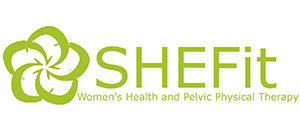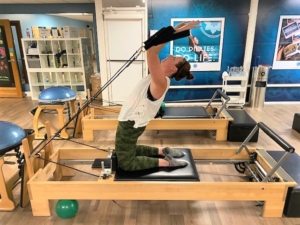Pilates and Your Pelvic Floor: for better or for worse?
As physical therapists working primarily with women, we often incorporate Pilates-type exercises into the rehabilitation process when we’re addressing concerns for diastasis recti, low back pain, prolapse, incontinence, or any of the other orthopedic issues we commonly treat.
Pilates was developed by Joseph Pilates and based on the principles of control, breath, concentration, flow, centering, and precision. Its benefits include improved flexibility, strength, and endurance achieved through coordination, balance and proper alignment via the powerhouse (made up of the abdominal muscles, spinal stabilizers, pelvic floor, diaphragm, and the muscles of the hips and glutes). Many of these muscles provide postural support and assist in general movement. They need to be “on” (to varying degrees) all day to support our body in performing tasks we otherwise think nothing about, like rolling over in bed, bending to lift a child, leaning back to rinse your hair in the shower, not to mention sports and other recreational activities. If there is discord in any one of these systems, your body may not be performing optimally and efficiently, which often times presents in the form of pain and/or dysfunction.
While Pilates is an excellent form of exercise for many, the wise practitioner will consider how it’s unique techniques may negatively impact core and pelvic floor function during times of abnormal physical sensitivity like pregnancy and the early postpartum period, or in the presence of other injury/dysfunction. Poor management of breath and intra-abdominal pressure place increased load on the pelvic floor muscles and pelvic organs which may cause increased symptoms of leakage and/or prolapse in an already strained scenario like pregnancy. Exercises like clamshells, thigh squeezes, and bridging increase activation of the pelvic floor muscles (like a kegel) which for those who already have an overactive pelvic floor may not be appropriate. Pregnant mamas need to consider possible instability in the pelvis and lumbar spine related to the hormone relaxin and ideal modifications for position and safety. Those with diastasis rectus abdominis should understand how to activate the deep core musculature and how much load can be tolerated through the linea alba.
If you’re concerned about any of the issues above or interested in a crash course in Pilates and pelvic floor health for pregnancy, SHEFit is partnering with Club Pilates, Morena Blvd. in San Diego to bring you a 1 hour live workshop on February 20 at 3:30PM:
Pre/Postnatal Pilates: what You need to know about Diastasis Recti and Pelvic Floor Dysfunction
View details and register for the workshop here.
Stay tuned for future blogs which will highlight some of my favorite Pilates moves for pain, postpartum recovery, and how to modify for each stage of pregnancy.
Follow us on social media at @SHEFitPT for details and registration information!!
Dr. Jessica Chavarria, DPT


